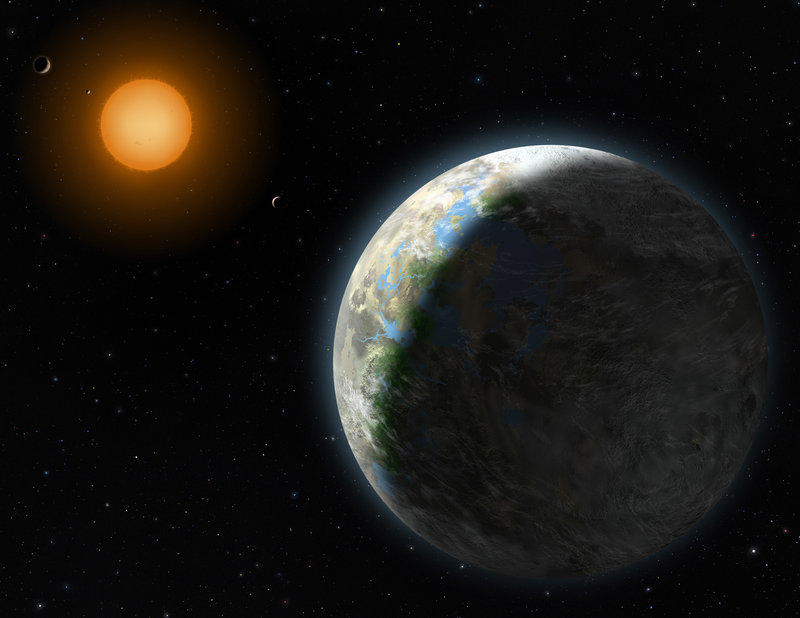Nobody has seen them yet, but scientists now believe there are tens of billions of planets the general size and bulk of Earth in the Milky Way galaxy alone — a startling conclusion based on four years of viewing a small section of the nighttime sky.
The estimate, made by astronomers Andrew Howard and Geoffrey Marcy of the University of California at Berkeley, flows from the simple logic that the number of small but detectable exoplanets — planets outside Earth’s solar system — is substantially larger than the number of big exoplanets in distant solar systems.
In a paper released Thursday by the journal Science, the two report that based on this galactic preference for smaller planets, they can predict that almost one quarter of the stars similar to our sun will have Earth-size planets orbiting them.
“This is the first estimate based on actual measurements of the fraction of stars that have Earth-size planets,” said Marcy, who did his observing with Howard at the Keck Observatory in Hawaii.
Their observations and extrapolations say nothing about whether all these Earth-size planets will actually have the characteristics of Earth: its density, its just-right distance from the sun, the fact that it is a rocky structure rather than a gaseous ball.
But Marcy said that with so many Earth-size planets now expected to be orbiting distant suns — something on the order of 50,000,000,000,000,000,000,000 across the universe — the likelihood is high that many are in “habitable zones” where life can theoretically exist.
“It’s tantalizing, without a doubt, to think some of those Earths are in habitable zones,” Marcy said. “And based on what we know, really, why wouldn’t they be?”
The assessment that Earth-size planets are ubiquitous in distant solar systems is expected to get additional support in February when the scientists operating NASA’s Kepler Mission, which is searching for Earth-size and habitable planets, report on what they have been finding.
“This is an extraordinarily exciting time in exoplanets and distant Earths,” Marcy said. “Think of it: We know that Aristotle was once at a cafe outside Athens drinking ouzo and speculating about whether there are other Earths in the universe. That’s a question we’re getting much closer to answering.”
The 166 solar systems reported Thursday by Howard and Marcy are all within 80 light-years of Earth — a short distance by astronomical measures.
“What this means is that, as NASA develops new techniques over the next decade to find truly Earth-size planets, it won’t have to look too far,” Howard said.
Copy the Story Link
Send questions/comments to the editors.



Success. Please wait for the page to reload. If the page does not reload within 5 seconds, please refresh the page.
Enter your email and password to access comments.
Hi, to comment on stories you must . This profile is in addition to your subscription and website login.
Already have a commenting profile? .
Invalid username/password.
Please check your email to confirm and complete your registration.
Only subscribers are eligible to post comments. Please subscribe or login first for digital access. Here’s why.
Use the form below to reset your password. When you've submitted your account email, we will send an email with a reset code.